History and Danish Golden Age Painting
- Kasper Monrad, arkivet.thorvaldsensmuseum.dk, 1997
- Translation by Viggo Hjørnager Pedersen
This is a re-publication of the article: Kasper Monrad: ‘History and Danish Golden Age Painting’, in: Meddelelser fra Thorvaldsens Museum (Communications from the Thorvaldsens Museum) p. 1997, p. 29-44.
For a presentation of the article in its original appearance, please see this facsimile scan.
The Decline of the History Painting as a Genre
When Christoffer Wilhelm Eckersberg returned to Copenhagen from Rome in 1816 he brought with him, among many other paintings, two pictures with subjects from the Metamorphoses by Ovid. They had been commissioned by one of his major patrons, the Danish merchant Mendel Levin Nathanson. But Eckersberg had not sent the two paintings to him on their completion as was originally agreed, because he was dissatisfied with them and had decided to repaint them. This never happened, however, and the merchant never received the pictures. It seems that both men lost interest in the subjects. Eckersberg even cut one of the paintings into pieces so that only a fragment of a sleeping woman is preserved. Quite symbolically she plays only a subordinate part in the story, and the picture of her has the character of a genre scene in an Antique setting rather than a mythological scene. Instead of the two mythological paintings Eckersberg painted two portraits for the merchant – one of himself and his family and one of his eldest daughters.
During his stay in Paris and Rome Eckersberg had painted a number of mythological pictures, both on commision and on his own initiative. On his return he had been given a subject from Norse mythology for his reception piece as a member of the Royal Academy of Fine Arts in Copenhagen. He did paint the given subject, but afterwards in a public debate he openly declared that subjects from Norse mythology were not suitable for painters to paint. He made this statement in spite of the fact that during the Napoleonic Wars great efforts had been made by influential Danish writers to interest painters in Norse mythology and the traditional Danish legends, and at the Academy all history painters had been given subjects from these fields for their membership paintings. The aim was more or less to create a tradition in painting for the same subjects that had played so great a role in the poems and dramas of the contemporary Danish writer Adam Oehlenschläger. All these efforts had scant effect, however.
The radical change of subject – from mythological pictures to portraits – is very symptomatic of the situation in Danish painting around 1820. History painting was still officially the highest ranking type of painting, and official commissions were still given to the artists. But otherwise – that is when the painters or their private customers chose the subjects – history painting lost ground and was clearly superseded by the lesser types, such as portraits, landscapes, townscapes, and particularly genre painting – all of them picture types that relate to contemporary life and to everyday situations.
During the next three decades only very few mythological pictures were painted by the Danish painters, and the same is true of the pictures with historical subjects. History painting lost its dominating position in Danish art. This can be seen very clearly from the annual Academy exhibitions at the Charlottenborg Palace. In 1811 43% of all paintings were history paintings, in 1831 only 14%, and in 1846 no more than 7%. During the same years the number of exhibited works rose from 30 in 1811 to 241 in 1846.
It was to a great extent the genre painters who gained ground at the expense of the history painters. In 1811 only 7% of the paintings at the Charlottenborg exhibition were genre pictures, and in the following years their share grew gradually, culminating in 1841 with 19%.
The Role of History in Danish Cultural Life
It should be noted that at the same time an intensified interest in Denmark’s past can be seen in other respects. As a field of research history gained still more importance, and several young writers devoted a great part of their talent to Danish history. For instance, in 1824 Nicolai Frederik Severin Grundtvig published a Danish translation of the Danish Medieval history, Gesta Danorum by Saxo, and in the same year Bernhard Severin Ingemann published the first of his historical novels, Valdemar the Great and his Men. In the years to come Ingemann wrote several other historical novels, all of them with a focus on Medieval history and with a popular impact that must have made several painters envious.
The aim of this article is therefore to focus on the role that history nevertheless did play in the the minds of the Danes as far as this can be seen in Danish painting of the early 19th century and also to discuss in what way and to what extent there is a historical dimension in the pictures.
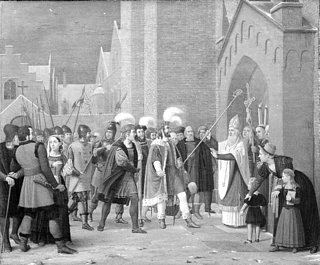
Fig. 14. Wilhelm Marstrand: King Svend Estridsen is Refused Admittance to Roskilde Cathedral by Bishop Vilhelm, c. 1832. Oil on canvas. 54×65 cm. Statens Museum for Kunst, Copenhagen. Inv. no. 207.
History painting was not entirely dead. But it was almost exclusively kept alive thanks to the official commissions, first and foremost for Christiansborg Palace. During two periods – 1817-28 and 1833-41 – Eckersberg executed two series of large paintings for the palace, each consisting of four paintings; in the first series the pictures were to provide the historical grounds for the reigning king’s position. Two of them deal with the establishment of the power of the Oldenburg dynasty, and the other two deal with the introduction of absolutism in Denmark. In the second series the pictures were to illustrate the kings’ exemplary deeds and serve as an example to the citizens, as for instance The Institution of the Elephant Order by Christian I, painted 1841 (fig. 11). The subjects of these paintings were chosen by the king’s historical adviser who also made strict demands on the painter as regards the interpretation of the subjects as well as historical details.
Unlike Eckersberg, Johan Ludvig Lund chose the theme for the palace decoration he was to execute: the history of religion in Denmark, with The Introduction of Christianity in Denmark by the Monk Ansgar (painted in 1827) as the zenith (fig. 12). But this series of five paintings also served the interests of the ruling monarch.
When in 1831 Eckersberg was hoping to get the commission of the second series of paintings for the palace, he made some suggestions for the subjects, one of them was The Widow and Sons of Sten Sture are Released from Prison by Frederik I (fig. 13). Here he has not painted a scene of great national importance, but a scene that shows the king from a human point of view. The subject was not accepted, however, by the commission in charge of the rebuilding and decoration of the castle – it was considered too private and not of sufficient historical significance. The irony of it is that the second version of the picture, which Eckersberg painted in 1833, was bought by count A. W. Moltke, who was a member of the commission. In other words, a subject that was not considered suitable for an official decoration could very well fit into the private collection of one of the most outstanding members of society.
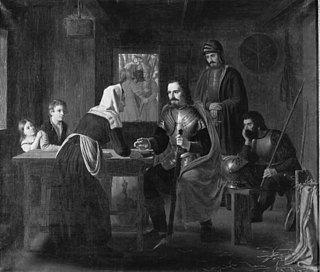
Fig. 15. Peter Raadsig: The Poor Woman Giving her Loaf to Niels Ebbesen, 1836. Oil on canvas. 87.5×109 cm. Statens Museum for Kunst, Copenhagen. Inv. no. 288.
Eckersberg had to stick to officially recognized subjects. But his pupils showed interest in motifs that were quite similar to the scene with Frederik I and Sten Sture’s widow and sons, when they chose to show history paintings at the annual exhibitions at the Royal Academy at the Charlottenborg Palace. Thus Wilhelm Marstrand exhibited in 1832 a picture with a subject from Saxo’s Gesta Danorum, in which a personal conflict is the basic theme. The Danish king Svend Estridsen is refused admittance to Roskilde Cathedral by his close friend bishop Vilhelm, because the king had disgraced himself by having a couple of men killed in the cathedral (fig. 14). Likewise Peter Raadsig painted The Poor Woman Giving her Bread to Niels Ebbesen in 1836 (fig. 15). The subject is probably taken from a Medieval ballad, but is also closely related to one of the historical novels by Ingemann, Prince Otto of Denmark, where the story of Niels Ebbesen is also told. The focus of the story has been changed from an episode of great national significance – the slaying of the German count Geert by Niels Ebbesen-to a less important incident which took place shortly after the heroic deed: the poor woman is even prepared to give her last loaf to the hero. The picture has almost the character of historical genre. Both Marstrand’s and Raadsig’s paintings were nevertheless sold to the Royal Picture Gallery and were thus officially recognized – and were meant to be shown in the very same palace as Eckersberg’s monumental history paintings.
New Genres: The Historical References within the Family Portrait
In spite of these efforts history painting did not gain a position that can be compared to that of the contemporary historical novels. This is well known and has been noted before, and I shall not go into further detail here. But it leaves some important questions: Didn’t history now play a more crucial role in Danish painting than can be deduced from the history paintings? Wasn’t the historical dimension of the pictures in fact more important in this period?
I suppose that the reader has already guessed the answer to these questions from the very fact that I have posed them. The answer is of course “Yes”. History did continue to have great importance, which is manifest in several other pictures, though in a more indirect way.
As genre painting now took over the part that had hitherto been played by history painting it might seem obvious to look for references to history there. But it is almost in the nature of genre painting that it deals with contemporary subjects. On the whole Danish painters did not break this rule. Whether they painted genre pictures with a specific anecdote or snapshots of everyday life, whether their scenes were located in the streets or in the homes, they were only concerned with their own time. With one type of picture as an exception: the family portrait.
When in 1829 Martinus Rørbye painted a group portrait of the surgeon Christian Fenger and his wife and daughter he depicted the family at a table in their sparsely decorated living room (fig. 16). There is no doubt that the picture conveys the impression of the surgeon that he himself wanted to give. The painter might have shown him as a great art collector. At the time the picture was executed Fenger owned several paintings, among others a portrait by Jens Juel and two of the sketches by Eckersberg for the history paintings at Christiansborg Palace, as well as a couple of landscapes by Johan Christian Dahl, but evidently the surgeon did not want to stress that. On the contrary, the paintings on the walls are of moderate size and character. But at least one of them is not depicted by mere chance. It is a portrait of Fenger’s mother-in-law. It adds a very important aspect to the picture: it stresses the history of the family.
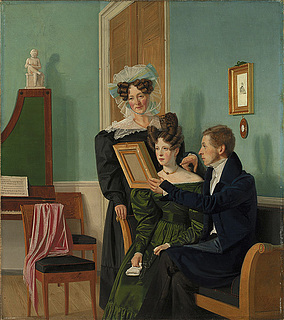
Fig. 17. Wilhelm Bendz: The Raffenberg Family, 1830. Oil on canvas. 44-9×39-7 cm. Statens Museum for Kunst, Copenhagen. Inv. no. 7594.
The family was one of the cornerstones of Danish society in the early 19th century. With the advent of the bourgeois middle class as the new dominating class in Denmark during the first two decades there was a new urge for the leading civil servants and wealthy merchants to stress not only the bonds between family members, but also the links back to the ancestors who had enabled them to achieve their new position. The message was: the new dominating class had not come out of nowhere. The importance of this issue is clearly demonstrated by the large number of family portraits that were painted in the late 1820s and the 30s, and their popularity is revealed in reviews by the art critics.
In almost all the family portraits the persons are being watched by their parents or grandparents on the walls. In 1830, the wine merchant Christian Waagepetersen had Wilhelm Bendz paint himself and his wife at his writing desk beneath two portraits of his parents (by Jens Juel), and six years later Marstrand painted Waagepetersen’s wife and children around a table in their living room beneath two portraits of his parents-in-law (copies or replicas of portraits by Eckersberg).

Fig. 18. Jørgen Roed: Roskilde Cathedral in Winter, 1836. Oil on canvas. 80×77 cm. Statens Museum for Kunst, Copenhagen. Inv. no. 3099.
The reference to the history of the family is even more obvious in Wilhelm Bendz’s portrait of The Raffenberg Family from 1830 (fig. 17). Here it is, in fact, the very theme of the picture. The young customs official Michael Raffenberg is apparently presenting his fiancée to his mother, and together they are looking at a portrait of his late father, each of them with different feelings that are in keeping with his or her relationship to the deceased. The young woman is thus presented not only to her new family, but also to the tradition it has arisen from.
Architectural Paintings and their Historical Motifs
We find quite another and more direct reference to history in the architectural pictures that the painters executed from 1830 onward. Or to be precise: from 1829. In this year a number of young academy students took up this category of pictures when they painted the interiors of two medieval churches – Constantin Hansen and Jørgen Roed of The Choir of St. Bendt’s Church in Ringsted and Christen Købke of The Transept of Aarhus Cathedral. All three painters chose to depict a very narrow view of the respective church instead of giving a general impression of the building. The influence of their teacher Eckersberg is clearly revealed by the selection of a part of the subject as well as by the perspectival construction. The pictures can thus be regarded as a continuation of the architectural paintings Eckersberg executed in Rome. Of equal importance, however, is the fact that in that very year, 1829, the Danish art historian Niels Laurits Høyen was made professor at the Royal Academy and started travelling throughout Denmark in order to examine and register Medieval and Renaissance architecture. With the aim of stimulating public interest in this neglected area he encouraged the young artists to paint pictures of some of the most important buildings. In the following years they actually did so.
During the 1830s these three painters painted a number of views of Frederiksborg and Kronborg Castles as well as Roskilde and Ribe Cathedrals. Soon their attitude to the buildings changed radically from Eckersberg’s approach, however. Now they wanted to give an impression of the building as a whole instead of only part of it, and therefore they preferred to regard it from a distance or from the most representative angle of the interior. In this way the historical significance became more obvious.
How closely the painters followed the advice of Høyen is perhaps best illustrated by Roed’s painting of Roskilde Cathedral in Winter from 1836 (fig. 18). The building is seen from one of the streets leading up to it, and in order to emphasize the majestic scale of the cathedral the painter has included some figures and the small houses in the foreground. The choice of the subject and the visual angle is very much in keeping with a publication on the cathedral issued by the Fine Art Society (Kunstforeningen) in Copenhagen in 1833-35 with eight copper plates and a short introduction by Høyen. In fact, one of the prints shows the building from exactly the same angle as Roed (although the medieval houses shown by Roed in front of the church are not included) (fig. 19). The print also shows the new sepulchral chapel in the south (built 1774-1825 by C. F. Harsdorff). But Roed has concealed it behind the snow-covered trees, probably at the suggestion of Høyen, who opposed the building of new extensions to historical buildings. On the whole, Roed’s total view of the cathedral lives up to Høyen’s demands. They were actually phrased specifically in relation to Roskilde Cathedral when the art historian wrote about the church in a letter to the chairman of the Fine Art Society, Jonas Collin, about 1830-31: “As an architectural work of art the general view is the best it has to offer, details reveal far too clearly that the builder could not master his material, and that he also had no understanding of the forms he used. [...] As a historical monument too, the general view will suffice [...]. This building is one of the many links in that chain that unites present day culture with ancient times.
Particularly the last statement is important, as Høyen has here formulated the basic idea of all the architectural pictures by the Danish painters. They wanted to stress the historical dimension and had no thought of the religious importance of the church, which is also a reason why the buildings were seen from the distance. In the pictures showing the Danish landscapes the painters were equally keen on including a church. They might make it a central motif, as Martinus Rørbye did when he painted The Village Church of Vester Egede in 1832. But mostly the church is seen at a good distance and is often only barely discernible, as is the case in a very large number of Johan Thomas Lundbye’s landscapes.

Fig. 20. Peter Christian Skovgaard: Højerup Church on Stevns Cliff, 1842. Oil on canvas. 142×149.5 cm. Statens Museum for Kunst. Copenhagen. Inv. no. 6650.
When Peter Christian Skovgaard painted Højerup Church on Stevns Cliff in 1842 he added quite another aspect to the rendering of a historical building (fig. 19). Here the history of the landscape also played a part in the picture, as did popular superstition. Being placed on the edge of the cliff the church was in great danger due to the constant erosion of the cliff face by the sea. According to old legend, however, the church moved a few inches – or to be precise: one step of a cock – away from the cliff every year at Christmas to avoid being washed into the sea. Skovgaard has no hint of this in his picture, but he probably took it for granted that the legend was known to all the viewers of the picture.
The Landscape Painting Linking Ancient and Present Day Culture
The landscape painters, however, went even further back in time in order to point out some of “the many links in that chain that unites present day culture with ancient times.” They focused on one of the oldest signs of culture in Denmark, the 5000-year- old dolmens that they found scattered around the country side. The choice of this motif was obvious since the dolmen was specifically Danish – or rather Nordic, since this type of dolmen is found only in South Scandinavia and North Germany.
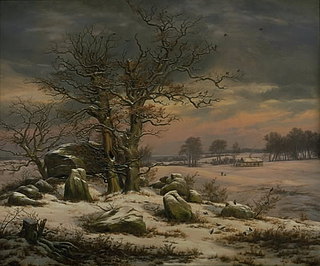
Fig. 21. Johan Christian Dahl: Dolmen near Vordingborg in Winter, 1829. Oil on canvas. 173×205.5 cm. Statens Museum for Kunst, Copenhagen. Inv. no. 167.
A key work in this context is Johan Christian Dahl’s Dolmen near Vordingborg in Winter that was commissioned by the Danish king and executed in 1829 (fig. 21). Here the Norwegian painter has made the dolmen the main motif of the picture along with the old oak trees. Dahl may have got the urge to paint the ancient burial mounds from the archaeologist Christian Jürgensen Thomsen with whom he seems to have travelled in this part of Zealand in 1816 and studied the dolmens. Dahl has not just pointed at this relic of the past, but has given the picture a moral: When he exhibited the painting at the Charlottenborg Palace in 1830 he made an important addition to the title Winter landscape: “In the foreground a disturbed burial mound.” The painter has thus requested that his contemporaries pay more attention to the ancient monuments.
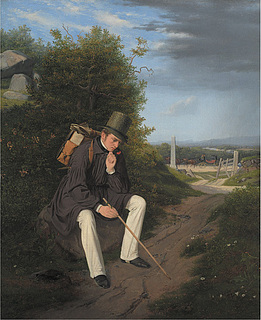
Fig. 23. Jørgen Roed: An Artist Resting by the Roadside, 1832. Oil on canvas. 58×48 cm. Statens Museum for Kunst, Copenhagen. Inv. no. 2063.
Perhaps inspired by Dahl Jørgen Roed painted himself and his friend and colleague Constantin Hansen on a sleighride in the Danish countryside the following year (fig. 22). In an almost humorous way he points to the task of the artists by making them ride in a sleigh to the subjects of their pictures, a dolmen in the foreground and a village church in the distance.
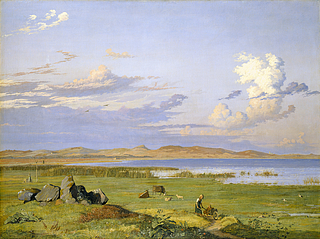
Fig. 24. Johan Thomas Lundbye: Landscape at Lake Arre with a View of the Shifting Sand Dunes at Tisvilde, 1838. Oil on canvas. 94.2×125.5 cm. B253.
It was presumably with greater seriousness that Roed painted An Artist Resting by the Roadside in 1832 (fig. 23). At the foot of a dolmen in a Danish landscape the artist is sitting in deep thought, contemplating the two kinds of subjects that he may choose in his pictures to illustrate history: in the sand he is drawing an idealized profile of a face that might be used in a history painting, and behind him is the ancient burial mound. The picture does not, however, give an indication of which of the two directions the artist ought to follow. It is probably a self- portrait of the artist, but it should be noted that Roed was neither a history painter nor a landscape painter proper.
By the end of the 1830s new significance was given to the symbols of Danish history like the ancient dolmen. This was due to the conflicts of national interest that had arisen in the Danish king’s two German duchies of Schleswig and Holstein between people with divergent sympathies (i.e. Danish and German) and violent nationalistic feelings flared up on both sides, resulting in a marked mood of mutual intransigence. Several painters took part in the efforts to promote Danish nationalism, first and foremost Johan Thomas Lundbye.
In 1838 he painted a Landscape at Lake Arre with a View of the Shifting Sand Dunes at Tisvilde, in which he depicted a burial mound at the edge of the lake in the foreground and thus made it a prominent motif in the picture (fig. 24). That it was of great importance for the painter to show this link to the past can be illustrated by the fact that in reality the dolmen was not situated at this spot. Its position even conflicts with prehistoric Danish burial customs – it would never have been placed on such low and swampy ground!
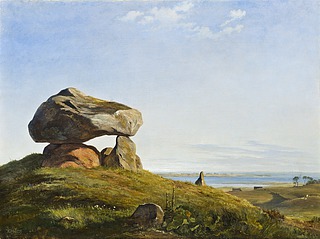
Fig. 25. Johan Thomas Lundbye Dolmen at Raklev, 1839. Oil on canvas. 66.7×88.9 cm. Thorvaldsens Museum. B255.
Lundbye even painted a picture in which a burial mound takes up almost the whole picture, Dolmen at Raklev from 1939 (fig. 25). In this case his source of inspiration must have been a drawing by Caspar David Friedrich, Dolmen at Gutzkow, that was executed ca. 1837-38 and acquired by the Danish crown prince shortly afterwards (fig. 26). That Lundbye should be inspired by a German artist at this point might seem something of a contradiction, but there is no doubt that Friedrich considered himself a Nordic artist, just as Lundbye probably also did, and that even to Germans the subject was Nordic.
Lundbye’s Zealand Landscape with a View of Dragsholm Castle (fig. 27) could at first glance be considered to be completely in keeping with his other paintings from around 1840. It shows a panoramic view of a Danish landscape with a prehistoric burial mound in the foreground and a medieval castle in the background. In this case, however, Lundbye has gone even further in order to restore the historic past: Dragsholm Castle looked quite different at the time he painted it! The tower had collapsed long since, and the red brick walls were whitewashed. The painter had taken care to find information on the castle’s original appearance, and he had based his depiction on an engraving in Resen’s Danske Atlas from ca. 1650.
Thorald Læssøe picked up this thread when he painted a North Zealand Landscape at Lake Arre where King Valdemar the Victor built Dronningholm Castle for his Queen Dagmar in 1841 (fig. 28). Next to a rather humble farm from his own time Læssøe painted the medieval castle even though it was demolished as early as the 16th century. But apart from these anachronisms both Lundbye and Læssøe painted the landscape as it looked when they were stood in it.
So did Vilhelm Kyhn in his Landscape at Øverød in North Zealand. Afternoon from 1849 (fig. 29). But he had quite a different purpose in doing it. For in a panoramic stretch of boggy land we see two groups of medieval riders. But they cannot be identified since no recorded historical event is known to have taken place at this place. We must therefore assume that Kyhn wanted to stress the history of the landscape which had looked pretty much the same for centuries and in this way create a link to the past. Here the painter has taken one step further than any of his colleagues, and the picture is one of the very few attempts – if not the only one – to paint a historical landscape in Denmark.
At this point the discussion of history’s importance to painting had taken a new turn. A few years earlier, in 1844, the art historian N. L. Høyen had given a famous – and often quoted – lecture in which he declared that the painters ought to paint motifs from Norse mythology and history, and in preparation ought to familiarize themselves with the folk customs that still survived. This they could do by going out and painting the peasants and fishermen who were untouched by modern civilization. In other words, Høyen’s slogan was first the life of the people, and then Norse mythology and history. But nearly all the painters who eagerly set about portraying the life of the people lost sight of the general aim and never got as far as history painting. So instead of marking a new start for history painting Høyen’s lecture marks the start of the scenes of Danish rural life from the 1850s and 1860s. But that is quite another story.
Last updated 11.05.2017